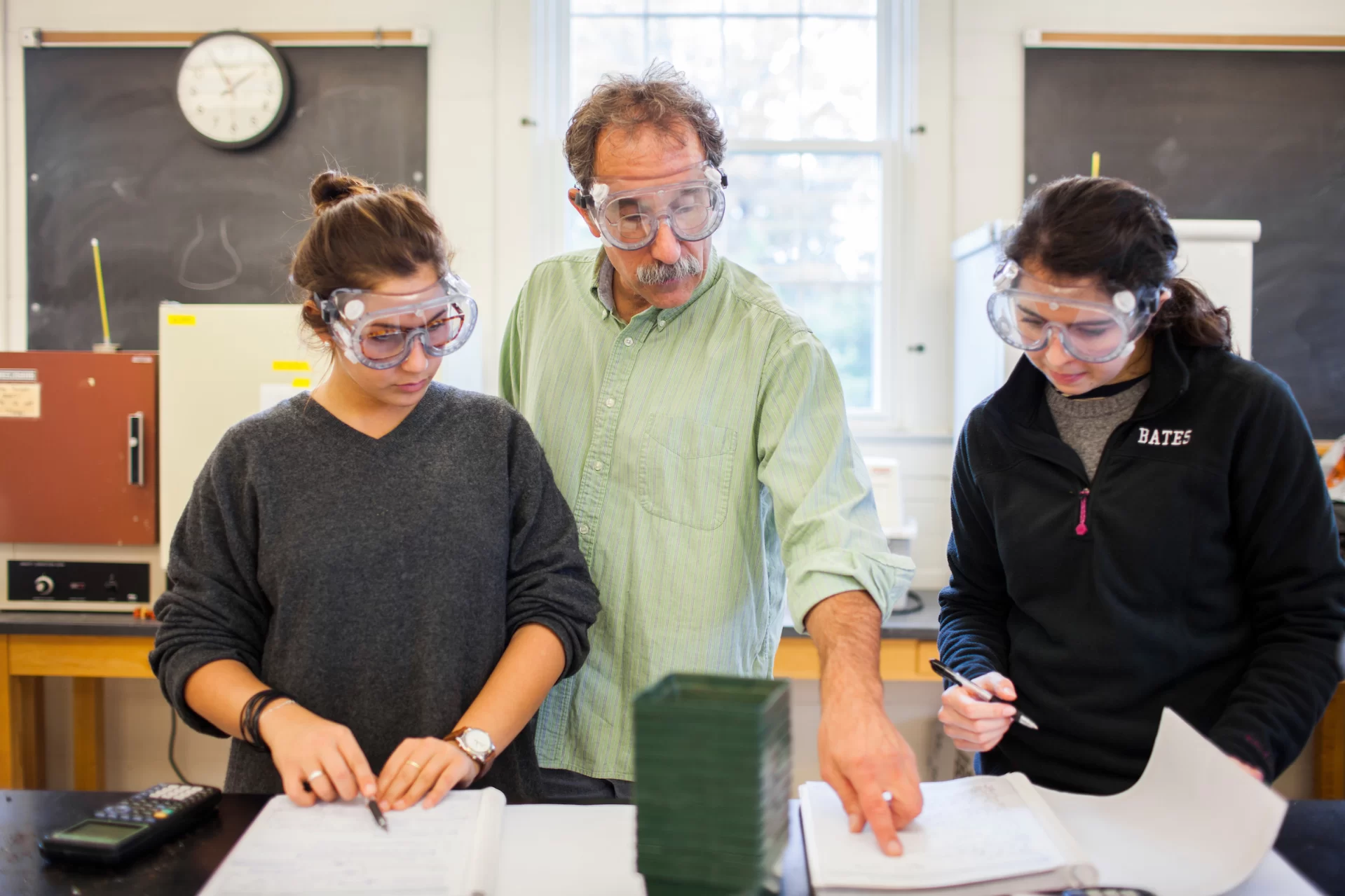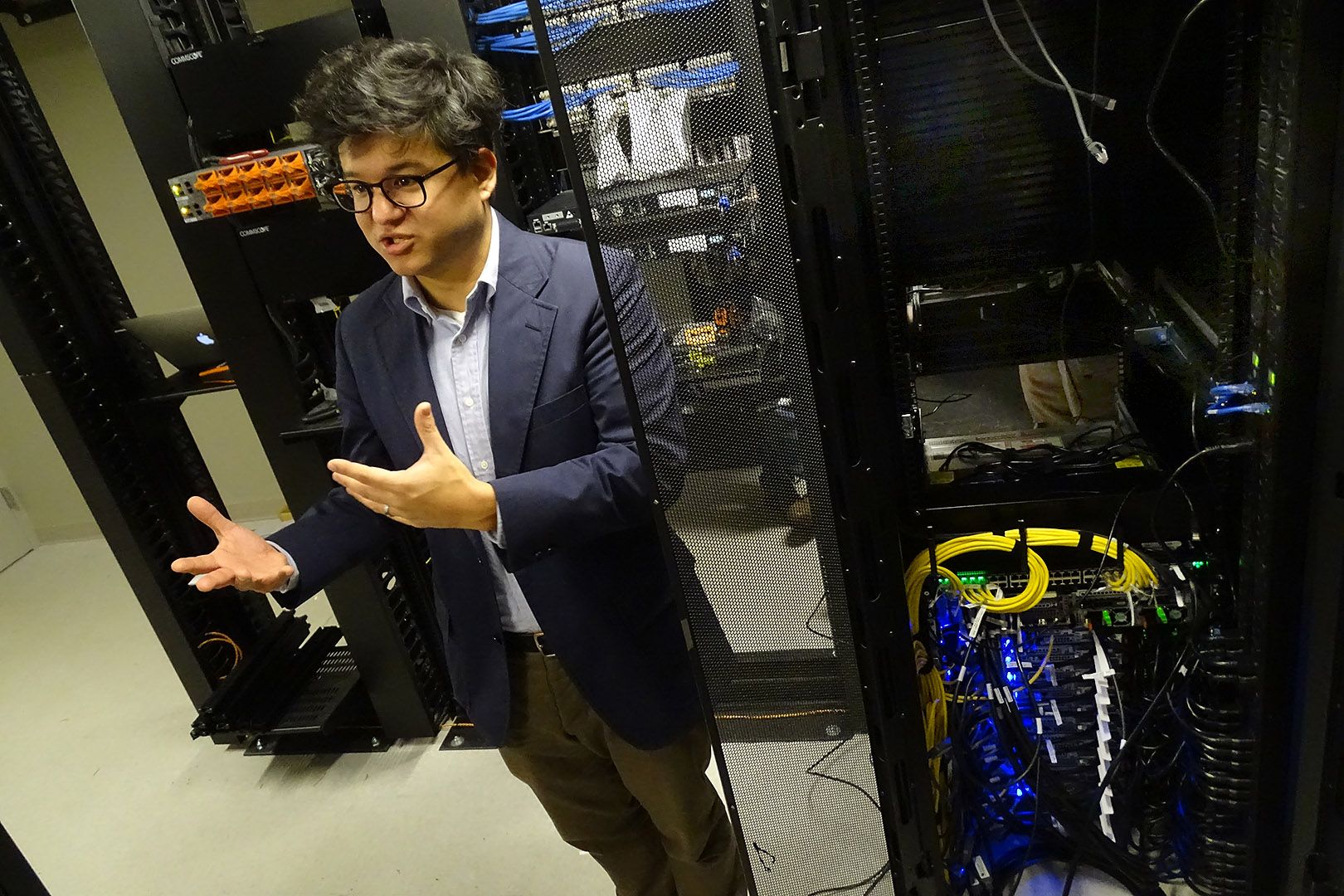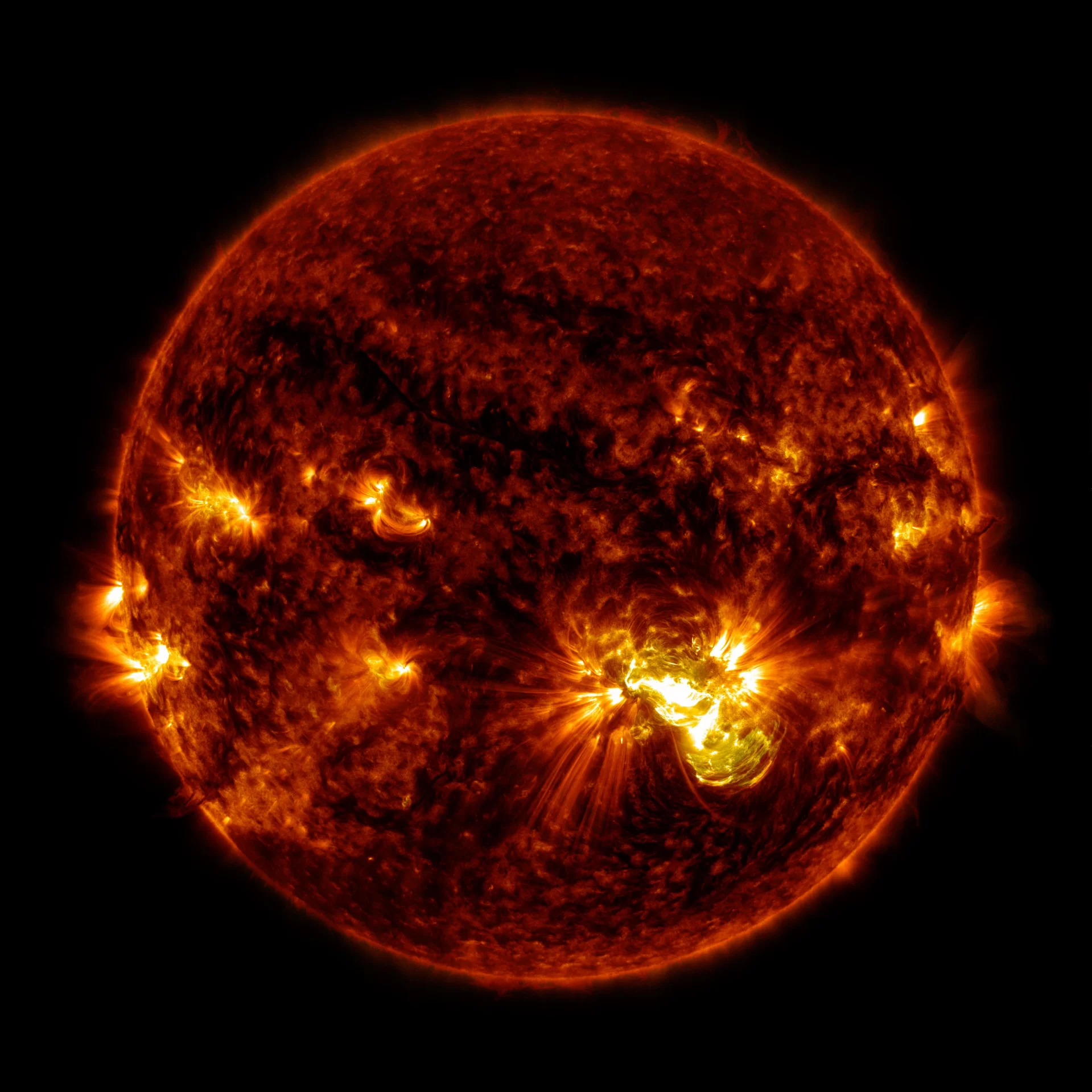
The cover article in the scientific journal Nature published today — co-authored by Bates Associate Professor of Physics Jeffrey Oishi — upends decades-old beliefs about the sun and solar phenomena that first captivated Galileo more than 400 years ago.
In the paper, Oishi and his seven co-authors offer a new explanation for the workings of the sun’s “dynamo,” the process that ebbs and flows on an 11-year solar cycle and is responsible for generating the sun’s magnetic field and other phenomena.
In sum, “our paper essentially claims that everything we thought we knew about the solar dynamo is wrong,” says Oishi, who is chair of the Bates Department of Physics and Astronomy and the principal investigator of a major recent grant that positions Bates to play a crucial role in the study and teaching of solar-terrestrial physics.

Oishi, the sole author from an undergraduate liberal arts college, says that better understanding of the solar dynamo has real-world implications for understanding and predicting phenomena like solar flares (which caused a brilliant and rare display of northern lights in Maine earlier in May) and coronal mass ejections, both of which are known to disrupt satellites, communication systems, and power grids on Earth, as well as sunspot activity.
“I like to point out,” says Oishi, “as does our first author [Geoffrey Vasil of the University of Edinburgh], that the problem of the solar dynamo, in one sense, is one of the oldest problems of the scientific era, starting when Galileo first observed and made his extensive drawings of sunspots.”

For decades, scientists have believed that the solar dynamo occurred deep within the sun, in a layer called the tachocline, a term coined by one of Oishi’s mentors, Edward Spiegel, and Jean-Paul Zahn in 1992 as an analogy to the oceanic thermocline.
“Everyone assumed that the dynamo begins about 30 percent down into the sun,” says Oishi. Using ever-greater computing power to run simulations, scientists have tried to support this theory, “trying the same ideas, getting results from bigger and bigger and bigger supercomputer simulations,” Oishi said.
But results “didn’t really look like the sun.” The result, Oishi says, is that “solar dynamo theory has been stuck. None of the ideas were really leading anywhere.”
Oishi and his colleagues developed a whole new approach, suggesting that the dynamo “operates near the surface, in the sun’s outermost layers,” specifically within the top 5 or 10 percent of its surface, known as the Near-Surface Shear Layer.
To develop the theory, the team used previously established knowledge “created from 40 to 400 years ago,” Oishi says, including helioseismic studies (a method similar to how earthquakes are studied on Earth).
They deployed good old-fashioned mathematics and ran numerical simulations using supercomputing power, which was Oishi’s contribution to the research. Such calculations “require massive amounts of new kinds of computational tools and techniques that didn’t exist before to do calculations that would just otherwise not be possible,” he said.
“I’ve been working on MRI in many contexts for 20 years. We are not the first people to invoke it in relation to the sun, but we are the first people to invoke it at the surface of the sun.”
Jeffrey Oishi
While the specific simulations were done on computers away from Bates, Oishi did use the college’s high-performance computing cluster, developed shortly after his arrival at Bates, “to develop the tools, the Dedalus software that we write, which definitely made huge use of the high performance computing center here at Bates.”
To buttress the theory that the solar dynamo occurs in the sun’s outermost layers, the researchers drew on the idea of Magneto-Rotational Instability. Well known in the study of the gas and dust disks that orbit young stars, it describes the instability in rotating magnetized flows that serves to amplify magnetic fields.
“I’ve been working on MRI in many contexts for 20 years,” says Oishi. “We are not the first people to invoke it in relation to the sun, but we are the first people to invoke it at the surface of the sun.”
The researchers contend that conditions on the surface of the sun are just right to create MRI, which in turn is thought to play an important role in sustaining the sun’s magnetic field through the dynamo effect.
Oishi says that this new knowledge puts scientists on the right path toward being able to someday make more accurate predictions about the sun’s solar cycle and concomitant high solar activity, mitigating the potential impacts to life on Earth. “By improving our knowledge of the sun’s magnetic cycle, we can better predict these space weather events and protect our technology and infrastructure,” Oishi says.
In technical terms, Oishi describes his field as non-equilibrium statistical physics. Practically speaking, that means that he is “pretty interdisciplinary. Some people are really interested in this kind of butterfly, that kind of tree, or this astronomical object. I’m not like that. I’m more of a technique person.”
“If it’s complicated enough that it’s interesting, and it’s simple enough that we can make a mathematical model of it, then I’m in.”




